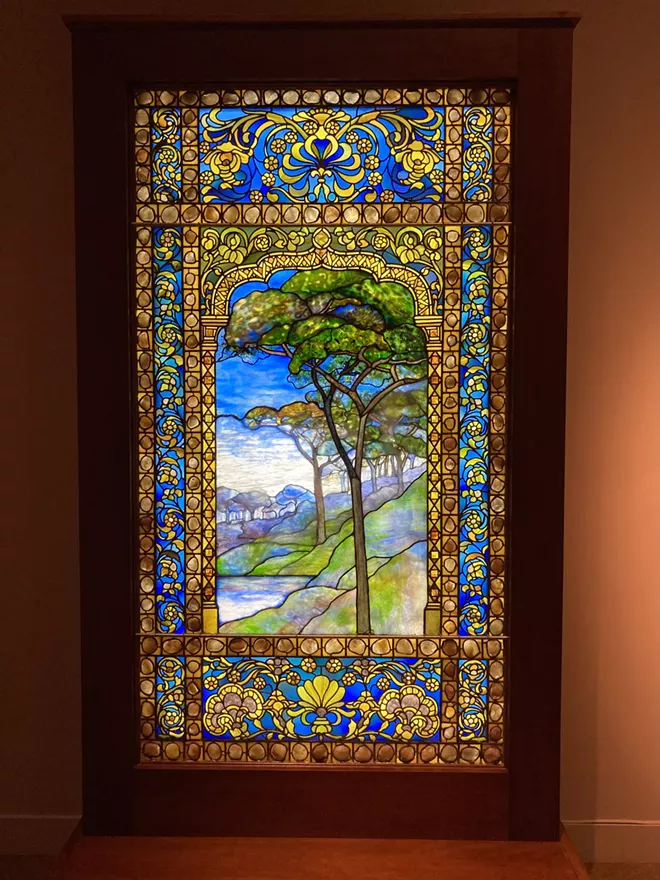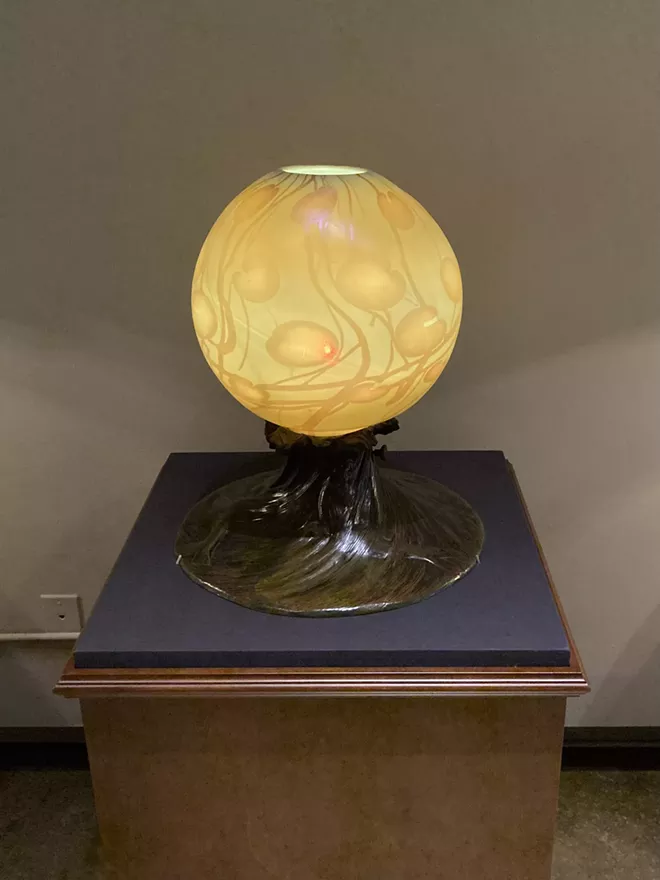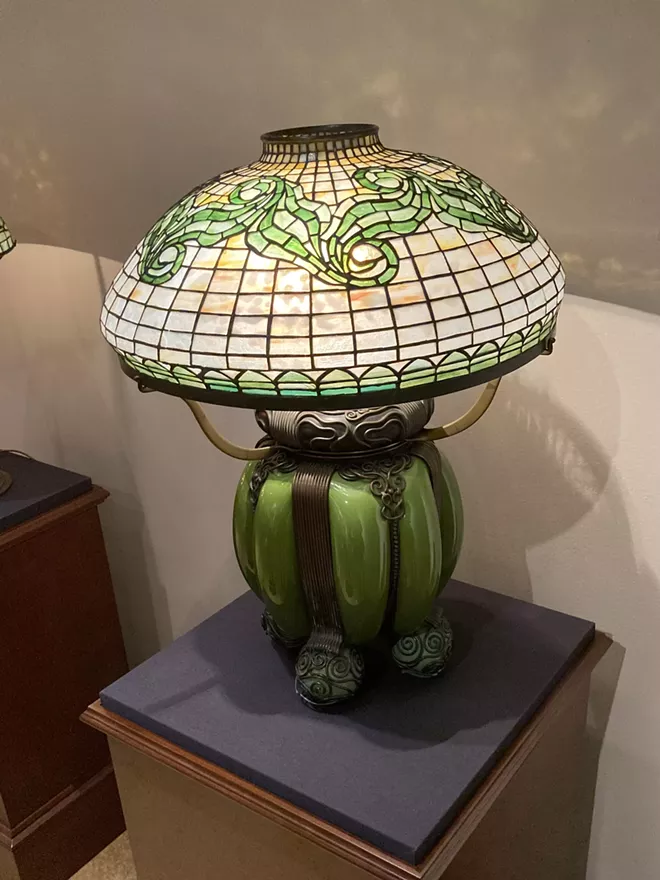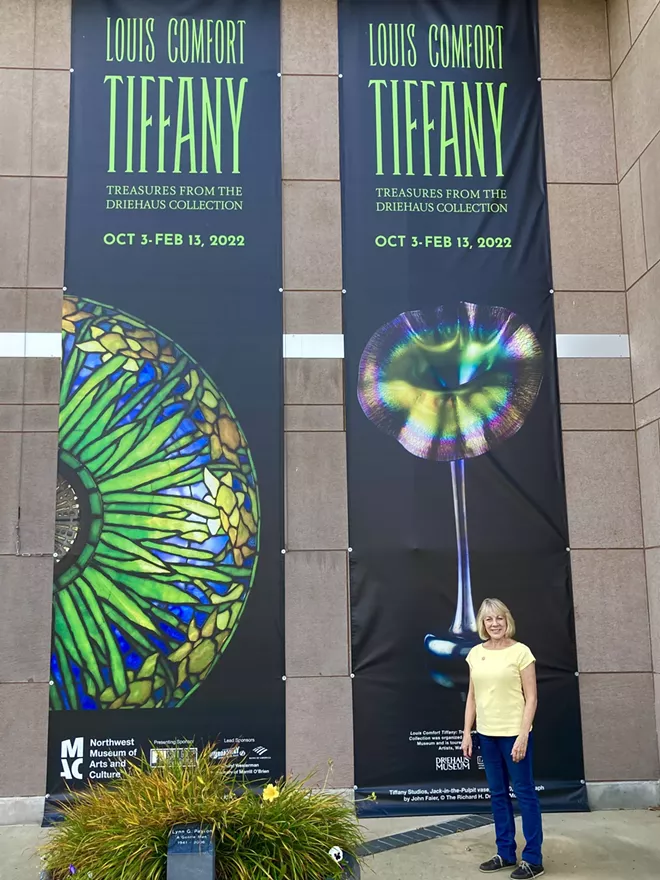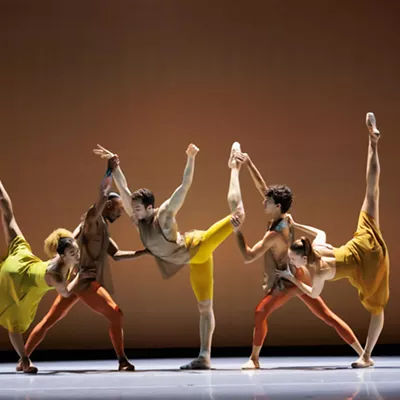
Not literally. That would be weird. Horribly insulated. Lets in way too much light. Terribly fragile. Horrible for small children.
So naturally, she had to check out the Northwest Museum of Arts and Culture's Louis Comfort Tiffany: Treasures from the Driehaus Collection exhibit when she was visiting Spokane. Now in its final week before closing after Sun, Feb. 13, the showcase features over 60 pieces from the famed Tiffany Studios.
While it's certainly an exhibition that anyone can appreciate, I was interested in what my mom's more discerning eye would be drawn to on the show floor. After all, she's both the type that wanted her picture taken by the Tiffany banner outside the museum and also casually declined checking out The MAC's gift shop because, "I probably already have 10 Tiffany books."
"The plating, the glass choices, and the colors," she says, gushing over Landscape. "And there's fractures and streamers, there's models, there's whispies, all kinds of stuff. The variety."
The stained glass artist jargon (as noted above) also becomes a fun topic of exploration. She points out details like streamers (textured glass with a pattern of glass strings affixed to it) in the works before I can even read the placards which explain it to us laypeople. She points out unexplained dimensionality in some windows as copper foil technique. There's also difference in the jargon; what the exhibit calls "glass plating," she knows as "laminating" and so on.
"I think one of the things that I love is how they basically designed the lamp bases," she says. "It's all one piece, you know, it's not just popping [the glass part on top]. Like the tree trunk going into the Wisteria and this little wave thing because it's an ocean, fish piece. "
But it's the Tyler Lamp that literally gets her to exclaim, "Wow... it's kind of a masterpiece." While its glass topper fits in with the traditional Tiffany lamp aesthetic, it's the base that blows her away. It features a central deco green piece blown to go inside its metal casing, plus four glass balls at its feet, encased in ornate metalwork. "This combination of metalwork and glass is really pretty spectacular."
But even as my mom blissfully took in the exhibit, there was always the worker voice popping up in the back of her mind, which occasionally became verbalized. When looking at an glass-jewel-encrusted firescreen her main takeaway is simply, "Would that be tedious or what?"
There's also the element of the state of the stained glass industry. Tiffany thrived at the turn of the 1900s, but that's not the world we live in now. While it's probably not accurate to say the art form is dying, it's certainly fading. Over the past decade more and more glass manufacturers have had to shut down. It's harder to get the raw materials the artists need, and more and more artists are leaving the field because it's too cost prohibitive, time-consuming, or they're simply aging into retirement. And it doesn't appear there's a young crop of stained glass artist rising up to take their place.
As my mom reads one placard about Tiffany's staffing she remarks with amused frustration, "Wow, [they had] 100 glassmakers... I can’t get one."
Because of it's quasi-functionality it's easy to take stained glass for granted. Don't. Enjoy it. Support it. Keep it from becoming a relic we can only view in a past tense in museums.

